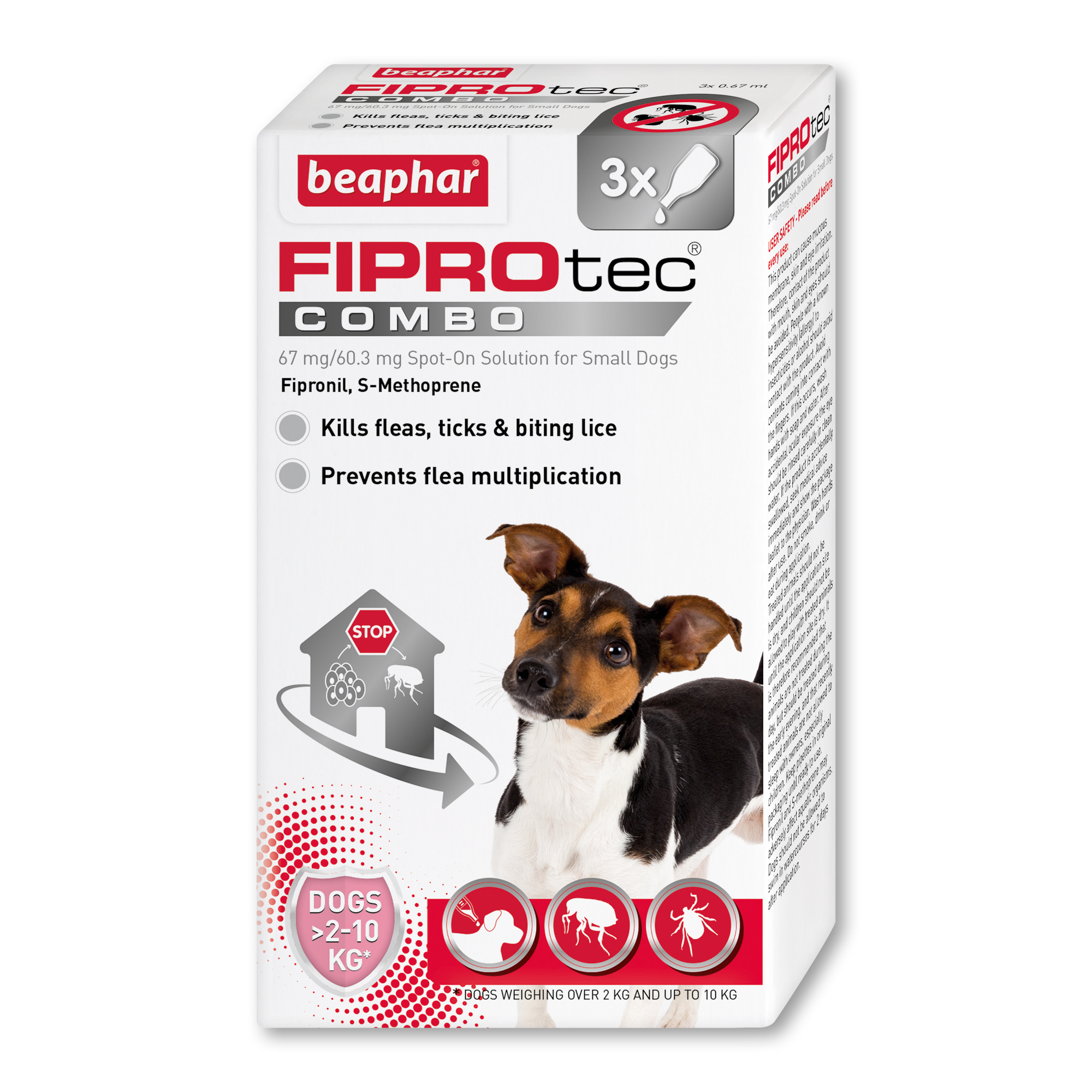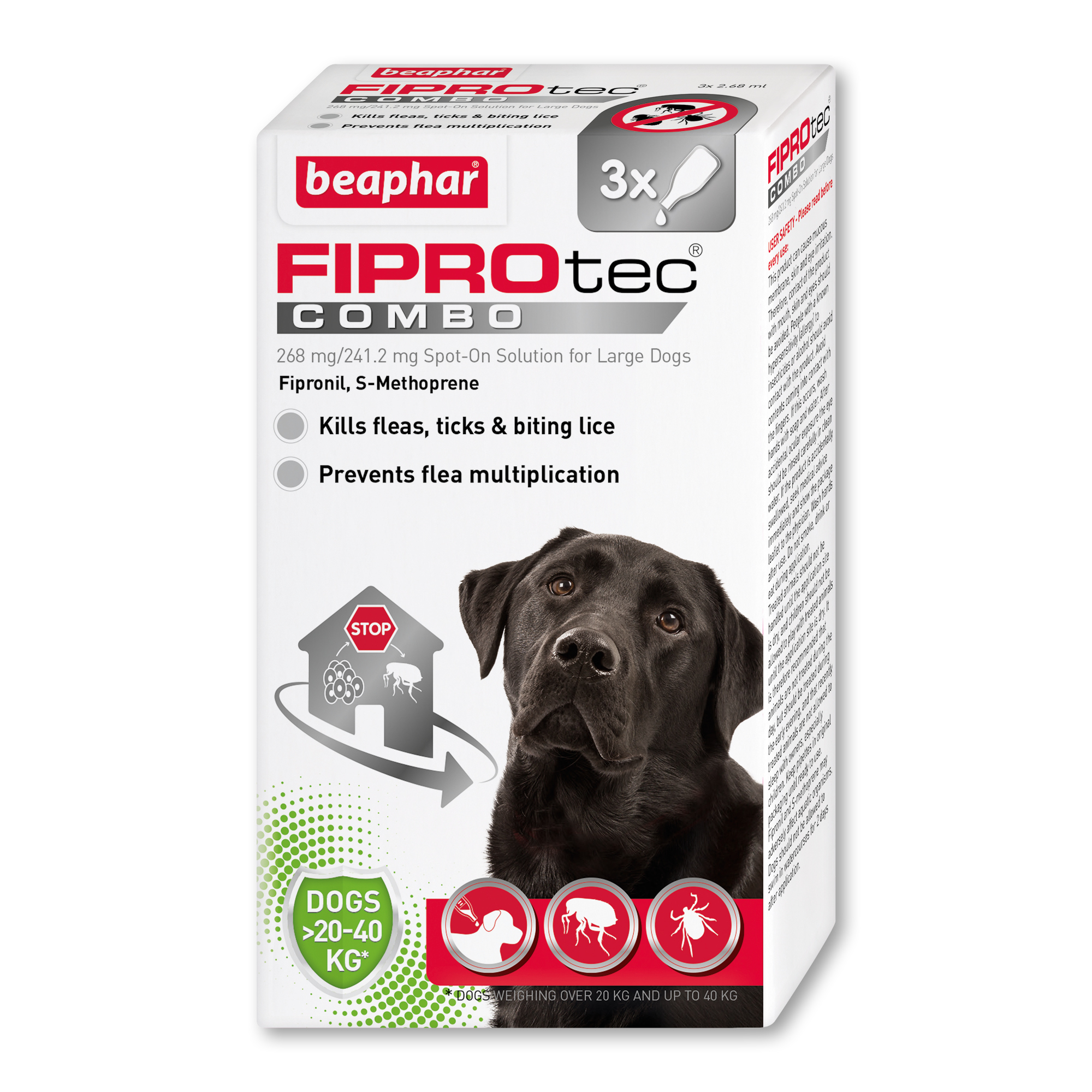How do I know if my dog has fleas?
Fleas are unwelcome parasites which affect pets, people and homes. No one wants their dog to get fleas, and flea infestations can be a worry for dog owners. Knowing the signs and symptoms to look out for will mean you can identify and treat a flea problem more quickly. And if your dog does have fleas, knowing how to get rid of them and prevent future infestations will help you stay flea free.
Dogs can get fleas from almost anywhere. But, it’s most likely they’ve picked a ‘hitchhiker’ flea during a walk.
How do dogs get fleas?
Dogs can get fleas from almost anywhere. But, it’s most likely they’ve picked a ‘hitchhiker’ flea during a walk. Very occasionally adult fleas may jump from one animal to another if they are in close contact.
If you’re regularly flea treating your dog, it’s unlikely hitchhiker fleas would lead to an infestation, as the flea treatment would kill them before they had a chance to multiply. But, if you don’t flea treat regularly, or there has been a gap in treatment, a flea infestation can occur.
How do I tell if my dog has fleas?
The easiest way to tell if your dog has fleas is by knowing what signs and symptoms to look out for. We’ve put together the 5 most common signs of fleas for you to look out for.
1. Scratching, biting and licking
The most common sign your dog has fleas is excessive scratching or biting. Fleas and flea bites are extremely irritating, and so your dog will scratch to try and relieve this. However, scratching, biting and licking is also a natural part of the grooming process, so if you see your dog scratching don’t panic immediately. Especially if you’re already following a regular flea treatment routine. Keep an eye on your dog, and if they seem to be scratching constantly or more frequently, it may be because of fleas.
2. Hair loss and skin problems
If your dog is scratching and itching excessively, it can lead to hair loss and skin problems. If this occurs we recommend speaking with your vet to rule out any medical problems.
Another reason for your dog’s hair loss of skin problems could be Flea Allergy Dermatitis (FAD). This is a condition both pets and people can suffer from. During a flea’s blood meal there is a transfer of saliva. If you or your dog are sensitive to flea saliva, the body will react by producing an allergic response. This is seen as a rash on the skin which is often painful and itchy.
3. Change in behaviour
Fleas can cause a great deal of discomfort and annoyance for your dog, so you may notice they’re more irritable than usual. Your dog could also appear to react to something that isn’t there as they can feel the fleas moving and biting on their skin, but can’t see them.
4. Black specks in your dog’s coat or bedding
If you see black specks on your dog’s coat or bedding, it’s highly likely your dog is suffering with fleas, especially if you haven’t flea treated in a while. These black specks are likely to be flea dirt, which is flea faeces containing undigested blood from your dog. A small amount of flea dirt is sometimes seen on correctly treated pets. If you’re up-to-date with your dog’s flea treatment and have protected your home, it is unlikely you have a flea infestation.
5. Pale gums
Pale gums are a sign of anaemia, which can be caused by severe flea infestations. Fleas can drink up to 15 times their own weight in blood per day, so anaemia caused by fleas is more common in puppies. Anaemia occurs when the number of red blood cells being lost is larger than the number of red blood cells being created. While adult dogs may be able to cope with losing some blood to fleas, puppies can’t. They’re much smaller and their bodies are still growing, so fleas and anaemia can cause serious health problems, and in severe cases lead to death.
My dog is showing signs of fleas, what should I do?
If your dog is showing signs of fleas, it’s best to act quickly, particularly if you haven’t protected your home. An adult female flea can lay up to 50 eggs per day, so one flea can quickly turn into hundreds if left untreated. We recommend using a simple wet paper test to find out if you’re dealing with a serious flea infestation. All you need is a damp, white sheet or kitchen paper and a flea comb.
Read more: How to check your pet for fleas
If this test shows a large amount of flea dirt and you haven’t already done so, treat your dog with a flea treatment that kills fleas, such as Beaphar FIPROtec® Spot-On. This will kill the adult fleas on your dog.
How can I treat my dog when they have fleas?
Check when you last treated and your dog's weight
Before treating your dog with Beaphar FIPROtec® Spot-On, check the minimum treatment interval of your last flea treatment. You will also need to know the weight and age of your dog. Applying too much product or reapplying too soon could cause an overdose.
Treat your home
While adult fleas live on your dog, the developmental stages – flea eggs, larvae and pupae – all live in the environment. If you don’t treat your home as well you’ll never be able to get on top of your flea problem.
Choose a household flea product that contains both an insecticide and an Insect Growth Regulator (IGR), such as Beaphar FLEAtec Household Flea Spray. The insecticide kills adult fleas. The IGR interrupts the flea life cycle, preventing flea eggs and larvae from developing, allowing to fight the flea infestation more effectively. Plus, Beaphar FLEAtec Household Flea Spray is effective for up to 6 months.
If you have more than one pet, it is important to check and treat all animals for fleas. Even if one of your pets stays indoors, they could still become infested by the fleas picked up by your other pets. The most common flea found in the UK, the cat flea (Ctenocephalides felis) can affect both cats and dogs.
My dog still has fleas after using a flea treatment. What's happened?
It is possible to continue seeing fleas after you’ve treated your dog, but this doesn’t mean the treatment isn’t working. The active ingredient in Beaphar FIPROtec® Spot-On is fipronil, which affects the flea’s nervous system, causing hyperactivity and death.
During the hyperactive stage, fleas become more active and may climb to the top of your dog’s coat. This is why pet owners report seeing ‘more fleas’ after treatment. In fact, these are the existing fleas being more active, and therefore more visible.However, another reason could be if you have only treated your dog but not protected your home. The adult fleas on your pet only make up 5% of the flea infestation, the other 95% (the flea eggs, larvae and pupae) are in your home.If you treat your dog but not your home, the adult fleas on your dog will be killed, but your dog will just become reinfested as the fleas already in the environment develop into adult fleas and jump on.
How long will I see fleas after treatment with Beaphar FIPROtec® Spot-On?
After treating your dog with Beaphar FIPROtec® Spot-On you may continue to see fleas for a few days due to the way fipronil works. Fipronil kills fleas within 24 hours of exposure.
Why is my dog still itching after flea treatment?
While itching and scratching is one sign your dog has fleas, this is not always the cause. Your dog may be grooming as normal. Your dog may continue to itch for a short time until the fleas are killed and the irritation has lessened, particularly if you’ve used fipronil and the fleas are in the hyperactive stage. This should subside, but do monitor your dog closely.
In the same way that we may have a reaction to human medicines, your dog could have a sensitivity to one of the active ingredients in a flea treatment. Unfortunately, again just like us, you won’t know this until you’ve used the product. If your dog continues to itching the application site repeatedly or you see any hair loss or redness on the skin, seek veterinary advice immediately and take the product packaging with you.
Conclusion
Remain vigilant for the common dog fleas symptoms and be prepared to take quick action against these persistent pests. Whether you physically spot fleas moving in their coat, see your dog constantly scratching irritating flea bites, or find flea dirt (those tell-tale specks that often look reddish brown or turn red when damp) in their fur or on the dog's bedding, prompt treatment is vital.
While flea shampoos like Beaphar Insectidical Shampoo for Dogs can offer immediate, temporary relief by washing away some fleas, remember that a complete strategy, often involving effective spot-on treatments and tackling the home environment as discussed, is necessary to fully get rid of fleas and prevent reinfestation. Understanding these key symptoms of fleas empowers you to act swiftly and keep your canine companion comfortable and healthy.









